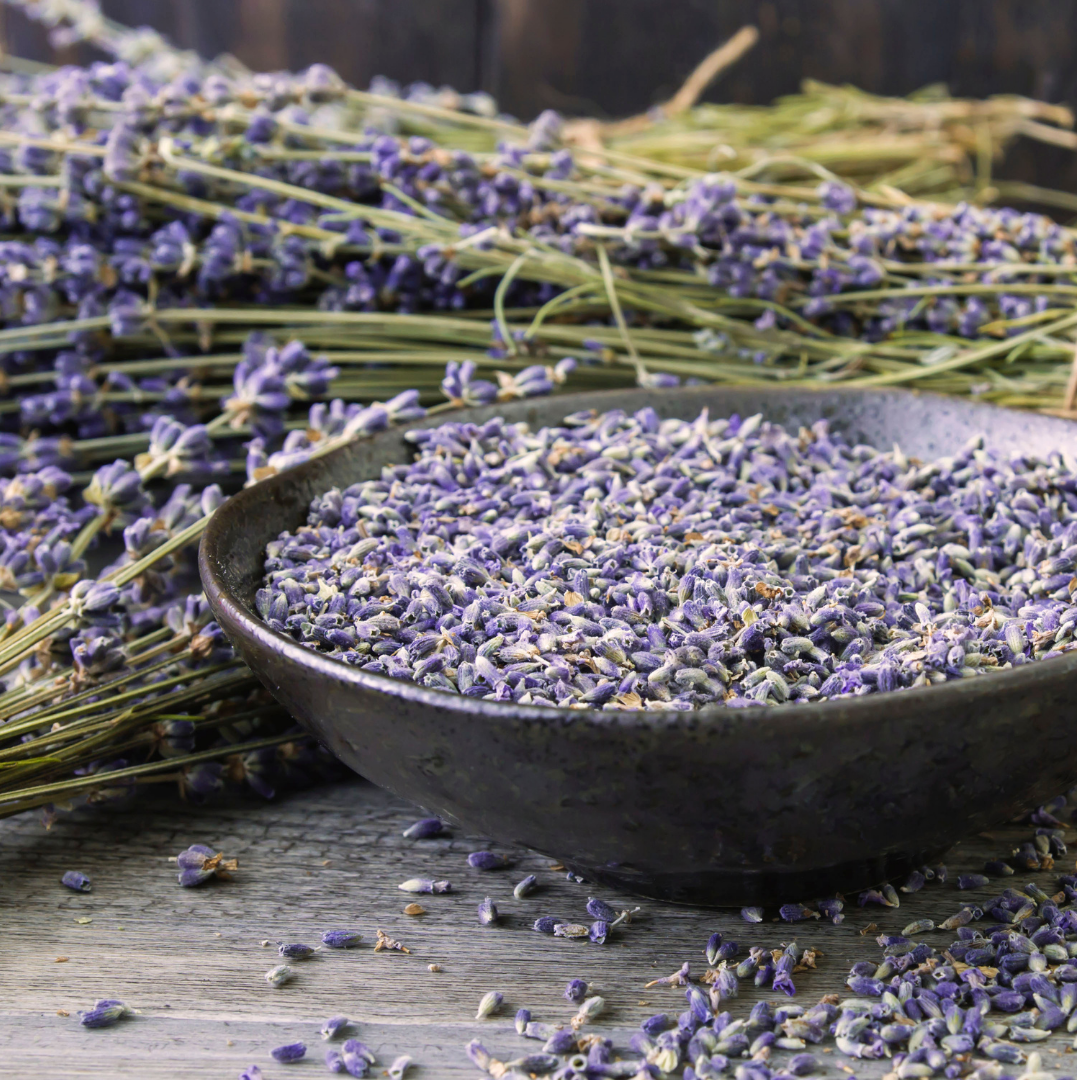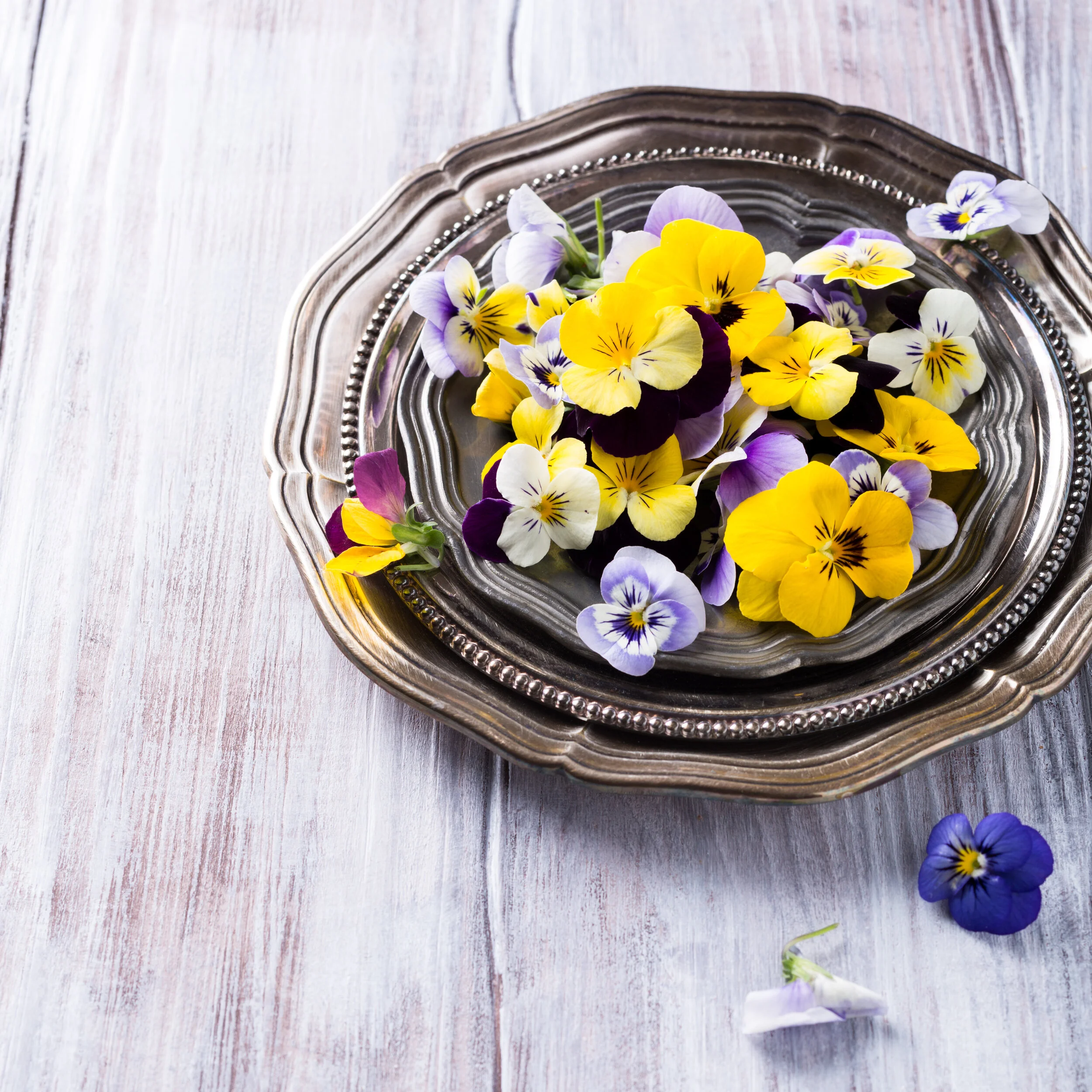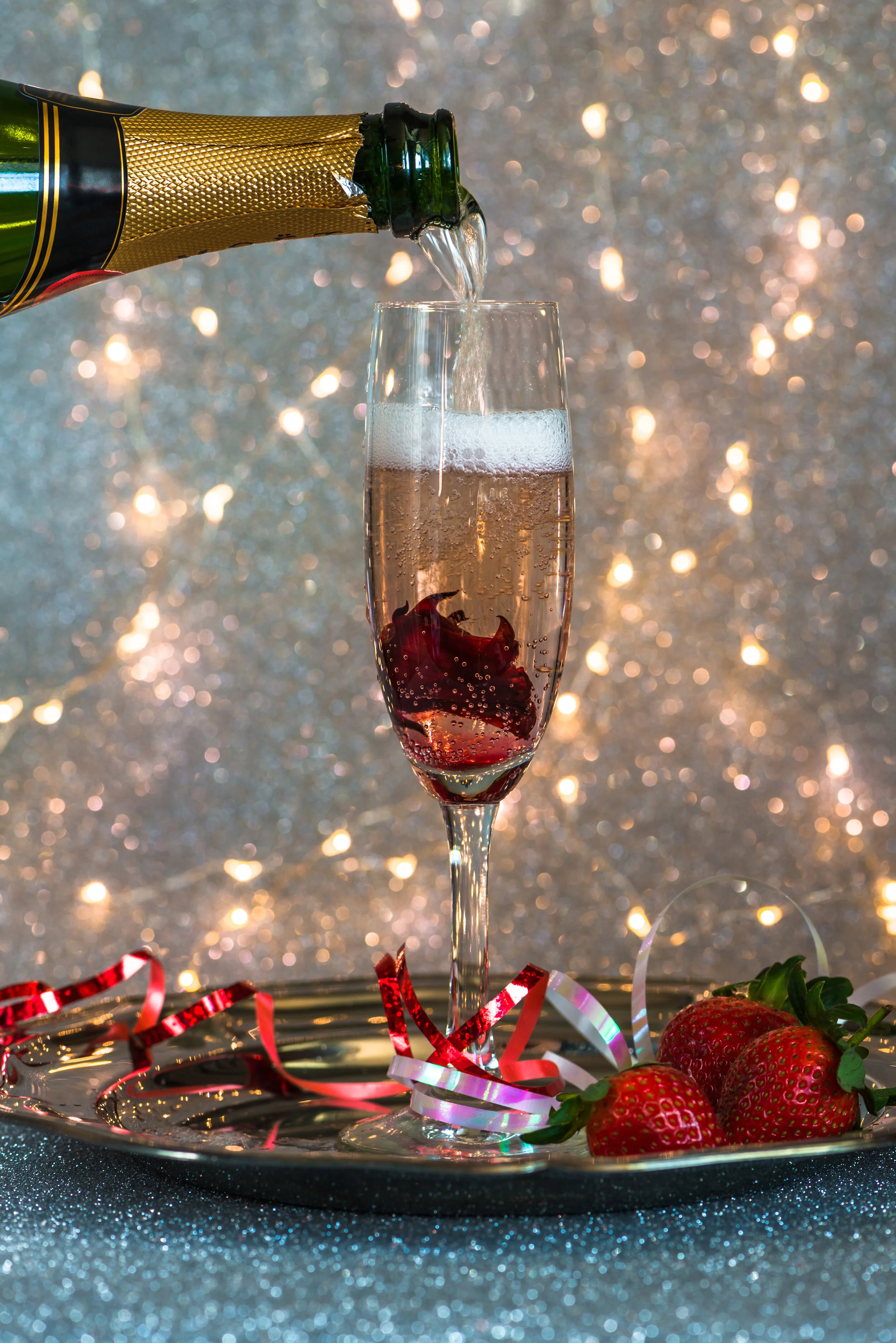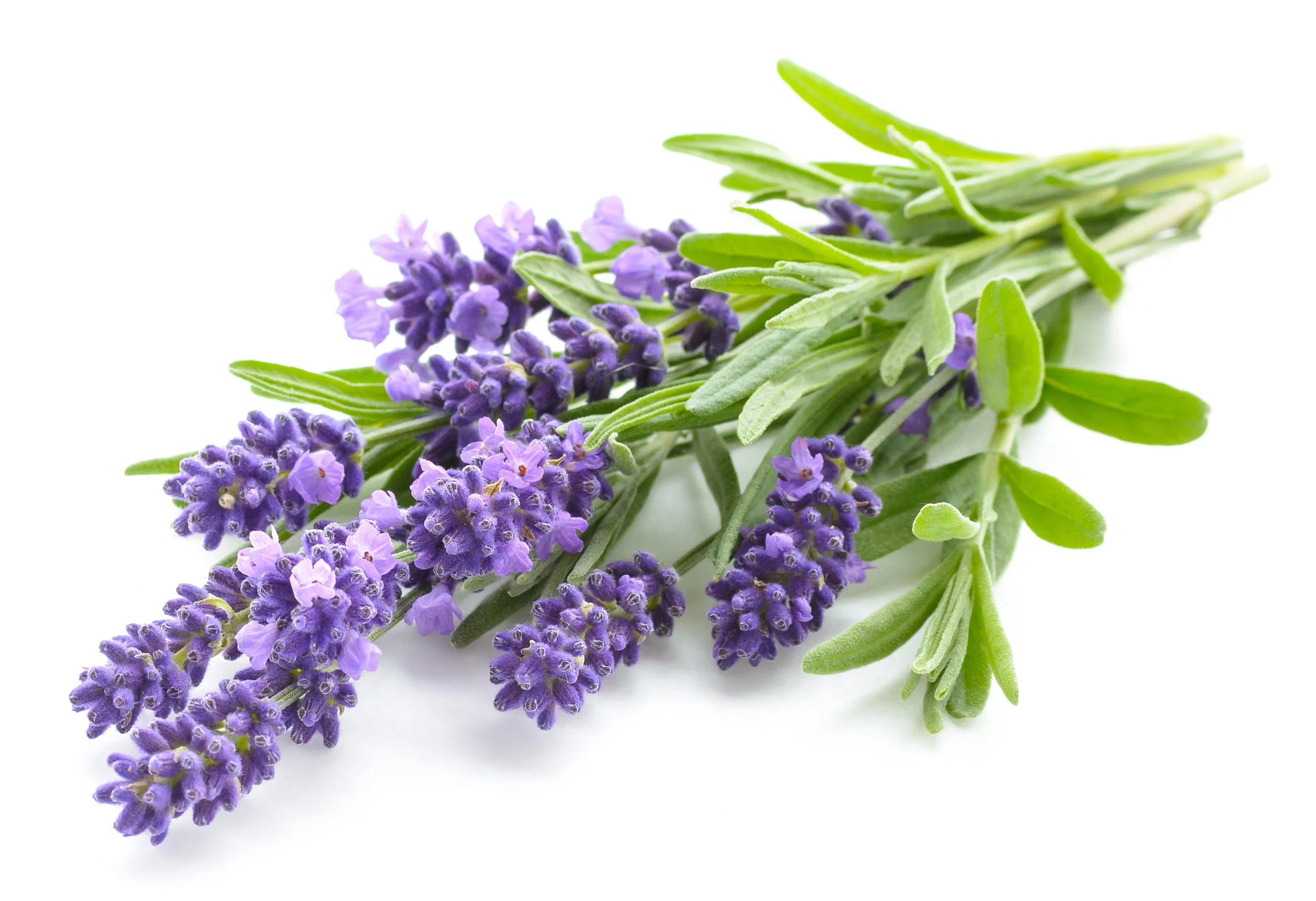3 Quick & Easy Ways To Use Dried Lavender At Home (In a sachet is not one of them.)
Lavender is a versatile plant with many uses both in fresh and dried form. One of the best things about lavender is it emits a sense of calm and relaxation. Today I’m sharing three quick and easy ways you can use dried lavender in your home, helping to create a calming atmosphere.
Lavender is a versatile plant with many uses both in fresh and dried form. One of the best things about lavender is it emits a sense of calm and relaxation. Today I’m sharing three quick and easy ways you can use dried lavender in your home, helping to create a calming atmosphere.
1 - Use while vacuuming:
Sprinkle your flooring with dried lavender buds before vacuuming. As you vacuum the lavender’s gorgeous floral fragrance will be released into the air.
2 - Lavender and rosemary fire logs:
The fragrance of these herbal bundles will create a relaxing atmosphere when added to your wood burning stove.
To make them all you need to do is take 10 stems each of dried lavender and rosemary. Layer the herbs, alternating ends, and tie tightly with raffia. Place them in the fireplace along with your wood logs.
3 - Lavender Vinegar:
This is super simple to make and a great natural cleaning product for your home. Put one part dried lavender buds to 4 parts white vinegar in a glass jar and cover with a plastic lid (or cover with a piece of plastic wrap before adding a metal lid). Let sit for a couple of weeks, then strain the lavender buds out and put the infused vinegar in a spray bottle. Use as an all purpose cleaner on sinks, countertops and mirrors.
I hope you enjoy these uses for dried lavender. If you have any other suggestions please share them in the comments below.
Have Your Own Readily Available Source Of Fresh Edible Flowers
There’s nothing like the addition of fresh flowers to your cooking or baking to take it from something ordinary to something extraordinary. A sprinkling of colourful petals on a salad suddenly makes it look gourmet, and a few carefully placed blooms on a cake makes …
There’s nothing like the addition of fresh flowers to your cooking or baking to take it from something ordinary to something extraordinary. A sprinkling of colourful petals on a salad suddenly makes it look gourmet, and a few carefully placed blooms on a cake makes it look like a professional decorated it. The problem is, (at least where I live), fresh edible flowers are not readily available.
However, there is a simple solution - grow your own. I have done very little gardening in my life, but the thought of having a readily available source of edible flowers has spurred me on to learn how to grow them.
There is an almost overwhelming amount of information out there about growing edible flowers. It’s a lot to sift through, but in the end, I narrowed it all down to three easy to grow choices. Here’s what I’ve learned about them:
Nasturtiums:
Nasturtiums became my first pick as soon as I read the words ‘Very easy to grow, they thrive on neglect’. (Not that I would ever be neglectful, but it makes it sound like a pretty fool-proof flower to grow!)
About growing:
Grows quickly from seeds or can be bought as bedding plants;
Grows well in containers;
Prefers full sun, but if in a really hot area can tolerate afternoon shade;
Consistent moisture, but not damp is best;
Do not fertilize as it will cause more leaves than flowers to grow.
About eating:
Peppery, spicy flavour (cross between a radish and watercress);
Full of vitamins A, C, and D;
All parts are edible (petals, leaves, seeds);
Come in reds, oranges and yellows;
Used in dishes whole, or torn into pieces.
Calendula:
Calendula is a summertime favourite with gardeners.
About growing:
Easy to grow from seed right in the garden;
Regular watering is preferred, but they can tolerate drier conditions;
Plant in nourishing soil - no extra fertilizing needed;
Dead-head plants and they will continue to bloom from early summer to late fall.
About eating:
Flavour can be spicy, bitter, tangy, or peppery;
Comes in various shades of yellow and orange;
Adds a yellow tint to food;
Pull the petals off the centre of the bloom to use in salads, or to decorate baking;
Dried calendula can be made into a tea, or added to soups or stews to calm an upset stomach.
Lavender:
While very popular as an ingredient in beauty products, lavender is also edible.
About growing:
Grow in a well-drained area, a raised bed, or in containers;
Prefers full sun;
Very little watering required (most people over-water);
No fertilizer is necessary
Harvest lavender when the first few flowers are opening on each stem.
About eating:
Can be used fresh or dried;
Distinctive floral taste mixed with a hint of rosemary and mint;
A little goes a long way - use sparingly;
Use to make tea, infuse sugar or honey, make herbed butter, or decorate sweet treats.
These are the first three edible flowers I’m going to try and grow as they all seem very forgiving to beginner gardeners. But remember - these flowers are for eating so make sure to grow them organically. For other important safety tips when consuming edible flowers read my post ‘Top 3 Rules for Using Edible Flowers’.
If you have any tips or advice to give a beginner gardener about growing flowers please put them in the comments below. They would be much appreciated.
PS - A little something I thought I’d share with you. I live in an apartment, so I was imagining I would need to grow flowers in pots out on the balcony. But, two days after I’d made the decision to try growing edible flowers, one of those weird coincidences in life occurred. I was out for my morning walk in the neighbourhood and I passed a place with a sign saying there were a few community garden plots available and if interested to apply. So I did - and I was accepted to be allocated one of the plots this year! So now I will have my own little patch of soil to work in. Thank you Pacific Spirit Community Garden!
Three Flowers for Festive Cocktails
A couple of months ago I was in England. One day we decided to visit Stratford-upon-Avon (the birth place of Shakespeare), and it just happened that there was a street fair showcasing local products . One of the vendors was a gin maker, (Pinnock Gin), and one of his gins caught my eye - it was the prettiest shade of purple. It turns out it was
A couple of months ago I was in England. One day we decided to visit Stratford-upon-Avon (the birth place of Shakespeare), and it just happened that there was a street fair showcasing local products . One of the vendors was a gin maker, (Pinnock Gin), and one of his gins caught my eye - it was the prettiest shade of purple. It turns out it was violet-infused. Of course with my love of all-things-floral, this appealed to me; and even more so when I was told the best way to use it was to pour a shot of the gin into a fluted glass and top it off with prosecco. All I could think of how was how delightful a drink that would be. So I purchased a bottle and I can now attest to the fact that the ‘Sparkling Violet’, (my name for it) is indeed a very delightful cocktail.
Many cocktails have long included flowers in their recipes, whether as an infusion, a liqueur, or as a garnish. Three flowers that work really well in drinks are rose, lavender, and hibiscus.
Rose: The flavour from the rose comes from the scent, so make sure to choose a fragrant variety, but use your judgement as to how much. The more fragrant the flower, the stronger the flavour will be. You want to add a touch of sweetness and a just a hint of florals to your drink - you don’t want it to taste like perfume! Recently I came across a recipe for a rose petal sangria that I can’t wait to try! Rosé wine with pink rose petals - what’s not to like!
Lavender: A member of the mint family, lavender has a herbaceous quality to it, and yet it’s floral fragrance makes it unique to any other member of the mint family. Lavender can be used fresh or dried as one of the ingredients in your drink , or use as a garnish to give your cocktail a dreamy, relaxing feeling. If you want to get some recipes for cocktails and non-alcoholic drinks using lavender, take a look at Yummerly’s website for great ideas.
Hibiscus: It’s well known that a hibiscus flower is a big beautiful bloom found in tropical locations. Less well known is the fact that it’s a very edible flower. In fact you can go to many local grocery stores and buy a jar of hibiscus flowers in syrup. You just place one of the blooms and about a tablespoon of the syrup in the bottom of a fluted glass. Top it off with sparkling wine and ‘voila’ - the perfect cocktail for the holiday season.
There are many other flowers that work well in beverages, but these three are a great place to start. A word of caution - be very sure that the flowers you are using haven’t been grown with any chemicals or pesticides or next to a roadside where they’ve been exposed to exhaust fumes. Once you’ve confirmed your flowers are safe and edible, try out some tried and true recipes and then have some fun creating your own. Cheers!
Layers of Lavender
Ahhhh……bedtime. The end of a long hectic day. Time to completely wind down and fall into a long deep sleep. You snuggle into bed and ‘ping’ your eyes are wide open. What happened? You’ve had a busy day, you’re tired out, you welcome sleep – but
Ahhhh……bedtime. The end of a long hectic day. Time to completely wind down and fall into a long deep sleep. You snuggle into bed and, suddenly, your eyes are wide open. What happened? You’ve had a busy day, you’re tired out, you welcome sleep – but it’s just not happening. You’re wondering what can you do. Once again- flowers to the rescue!
There’s a few flowers that aid with sleep. But when you think of sleep, what’s the first flower that comes to mind? You got it - lavender. There have been a lot of studies done on lavender and whether or not it really does work to help bring about sleep. The good news is – it does. It’s a natural alternative to help you relax and unwind. The familiar rich yet mellow scent is instantly calming, while the muted shade of purple gives a gentle place to rest your eyes.
There are many ways you can incorporate lavender into your night time routine. My technique is to use layers of lavender. I’ll share with you what I do, and then you can give it a try and see what works for you. In no particular order, this is my personal ‘Layers of Lavender’ technique”:
* I place a bunch of lavender on my bedside table. Fresh lavender when it’s in season, otherwise dried.
* In the evening I sip a cup of lavender tea. Right now I have two lavender teas I’m enjoying. The first is Organic Serenity Now, from David’s Tea, and the second is an Organic Chamomile with Lavender, from Traditional Medicinals Herbal Teas. I find both of these calm my mind and ease any tension;
* I place a lavender sachet under my pillow. This allows the fragrance to be close to me while I’m sleeping, but not be overwhelming. The sachet I have right now is from Provence En Couleur. I bought this sachet from a local business that imports lavender to Vancouver straight from Provence.
* I use a roll-on of high quality essential oil on my wrists and the back of my neck just as I’m about to go to bed. This I also purchased from Provence En Couleur;
* I really enjoy relaxing in a warm bath filled with lavender-scented bubbles. The Lavender Foaming Bath from L’Occatine, gently perfumes my skin leaving me feeling very tranquil.
* Following the bath I smooth a lavender-scented body lotion on. I was recently given a gift of Thymes Lavender Body Lotion. This adds yet another layer of soothing fragrance.
* And I always set a diffuser with a pure lavender essential oil. The two I’ve been using recently are Lavender High Grade from Saje and AOP Fine Lavender Essential Oil from Provence En Couleur.
These are my ‘Layers of Lavender’. I suggest choosing just one or two things to start, and then try adding in a few more. I’d love to hear what works for you, and if you have any ‘layers’ that you can introduce to me.
Important note: If you have an allergy to flowers or are sensitive to scents, this is not recommended for you.






